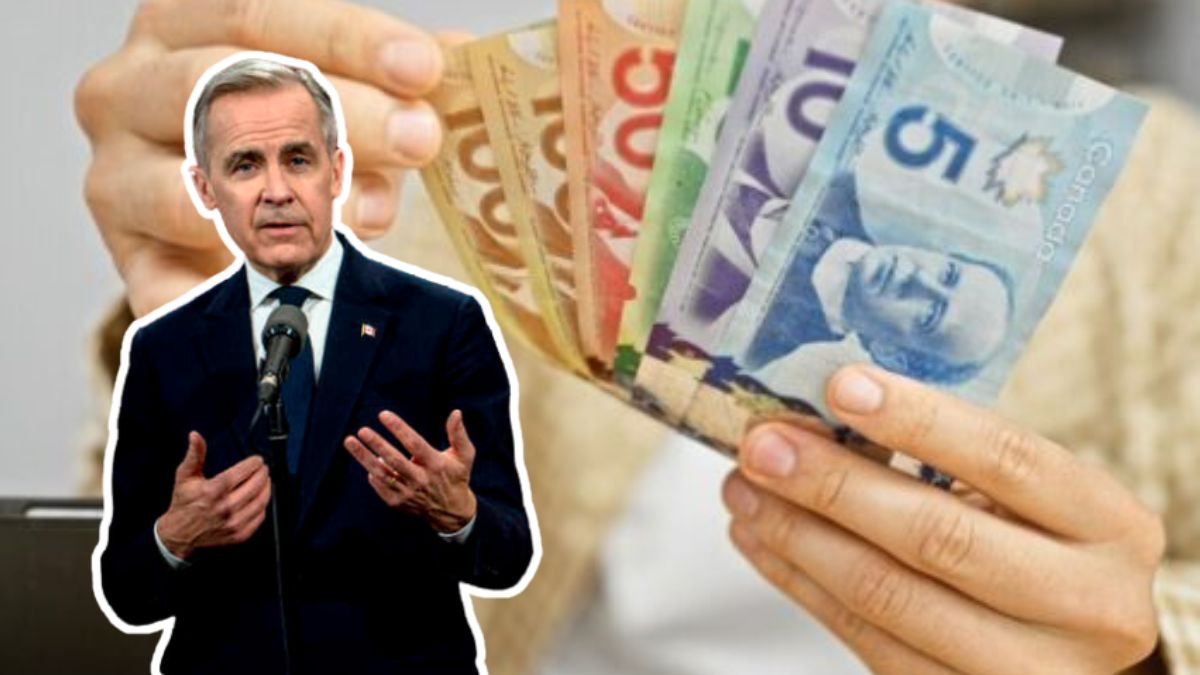Canada is a country that is often known for its high standard of living and strong social security system for its citizens. But for the last few years, inflation has made the life of the common citizens difficult. Whether it is grocery shopping, rent payment or electricity and water bills, the prices of everything are constantly increasing. The result is that families whose income was somehow able to meet the household expenses earlier are now feeling constant financial pressure.
Low- and middle-income families are facing this pressure more intensely. For example, rents in big cities like Toronto or Vancouver have increased so much that even the rent of a small apartment has become impossible for many families. At the same time, people living in rural and small towns are also struggling with the rising prices of groceries and transportation expenses. In such an environment, the government’s \$300 CRA Federal Payment 2025 has emerged as a ray of hope, which is an attempt to provide temporary relief to the citizens.
The Real Purpose of This Payment
The \$300 CRA Federal Payment is more than just a financial transfer. It carries a deeper social and political message. By introducing it, the government is signaling that it recognizes the day-to-day struggles of citizens and wants to step in with some relief.
For a family under pressure, this money could mean covering groceries for a week, paying a utility bill, or buying school supplies for children. For a senior citizen, it might mean paying for essential medicines or covering part of a monthly electricity bill. While the payment won’t solve long-term financial challenges, it provides short-term breathing space.
Eligibility Criteria – Who Can Receive the \$300 CRA Federal Payment?
To make sure the money reaches those who need it most, the government has set specific eligibility rules:
- Residence and Citizenship: You must be living in Canada with either citizenship or permanent resident status.
- Age Requirement: You must be at least 19 years old. This ensures the benefit reaches responsible adults.
- Income Threshold: Only households with annual income under \$41,000 qualify. Higher-income families are excluded to prevent misuse.
- Tax Filing: Since CRA determines eligibility through tax records, filing the 2024 tax return is essential.
- Other Benefits: People already receiving certain federal supports, such as Old Age Security or disability benefits, are excluded to prevent duplicate payouts.
These measures are designed to keep the program focused and targeted at vulnerable households.
Process of Getting the Payment
The government has simplified the process to ensure no one misses out due to paperwork. No new application is required.
The CRA will use your tax return and My Account information to confirm eligibility. If you qualify, the \$300 will be deposited directly into your bank account. To make this smooth:
- Keep your CRA My Account details updated (bank info, address, contact details).
- Ensure your 2024 tax return is filed on time.
- In case of a delay or error, you can contact the CRA for assistance.
This approach saves time, avoids duplication, and ensures payments go out quickly.
Payment Dates and Schedule
Although the exact release date for the \$300 Federal Payment 2025 is not yet confirmed, officials have indicated it will likely be rolled out in August or November 2025.
Clues come from related benefit schedules:
- Canada Child Benefit (CCB): August 13, 2025
- Old Age Security (OAS): August 20, 2025
- Disability Benefits: August 22, 2025
The government intends to align the \$300 payout with existing programs to give families a consolidated boost in the same period.
Is \$300 Enough?
Critics argue that \$300 barely makes a dent when rent in many Canadian cities exceeds \$2,000 per month. For struggling households, the payment may seem too small.
Yet, supporters note that for families living paycheck to paycheck, even a few hundred dollars can mean the difference between missing bills or making ends meet. For example:
- A single mother may use the \$300 to pay part of her child’s tuition or school supplies.
- A retiree could use it for medicines or a hydro bill.
While it’s not a long-term solution, it remains a symbolic and practical gesture of support.
Impact on Senior Citizens and Families
Seniors and low-income households are the biggest beneficiaries. Retirees living only on pensions often find it difficult to cover rising medical and utility expenses. For them, this payment can be a small but crucial buffer.
Families with children also gain. Rising inflation has forced many parents to cut corners on nutrition, clothing, and education. A one-time \$300 support can help cover immediate school costs or grocery needs, making a meaningful difference in tight budgets.
Part of a Broader Government Strategy
The \$300 CRA Federal Payment 2025 is not meant to be a standalone solution. Instead, it is part of the government’s broader anti-inflation strategy, which includes:
- Expanding affordable housing projects.
- Strengthening social security programs.
- Creating more employment opportunities.
By offering this payment alongside existing benefits like CCB, OAS, and disability supports, the government is sending a clear message: it is aware of citizens’ struggles and is taking steps—big and small—to ease the pressure.
FAQs
Q1. Who is eligible for the \$300 CRA Federal Payment 2025?
A: Canadian citizens and permanent residents aged 19 or older, with household incomes under \$41,000 and a filed 2024 tax return, qualify.
Q2. Do I need to apply for the \$300 payment?
A: No application is required. CRA uses tax records to determine eligibility automatically.
Q3. How will I receive the \$300 payment?
A: Payments will be deposited directly into your bank account linked to CRA My Account.
Q4. When will the \$300 CRA Federal Payment be released?
A: The exact date is unconfirmed, but it is expected in August or November 2025, in line with other benefit payouts.
Q5. Does this payment replace other federal benefits?
A: No, it is an additional support measure, separate from existing programs like OAS, CCB, or disability benefits.








